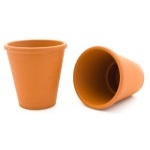- < Experiment 14
-
Experiment 15 v5
- Experiment 16 >
Making a sundial

Can you create a basic garden sundial that tells the right time?
Purpose
This experiment gives children an opportunity to use their reasoning and creativity to come up with their own sundials.
The child will learn how a sundial works.
You need to know
- how to tell the time
You will need






Steps
- Place your flower pot filled with soil outside the house where it will receive sunlight the whole day.
- Place a stick in the centre of the flower pot. This stick, called a gnomon, will act like the hour hand of your sundial.
- Now put your marbles around the stick so that they represent the hours of the day. Keep a record which marble indicates which hour.
- You may need to adjust the position of your marbles so that they tell the correct time each hour.
- Check your sundial every weekend for a month or so to make sure that it is still accurate.
Hint
This experiment is best done when you are around the house the whole day to check your work every hour.
Questions
-
Are your marbles needed to be placed exactly with equal distances from each other?
Why?
-
Does the gnomon need to point straight up in the middle of the pot?
Why?
-
Do you think that the stick and the marbles are the best materials to use in making a sundial?
What other materials can you think of?
Can you sketch a new design?
Expected answers
-
At first, your child might think that the marbles should be placed with the same distances from each other just like those found in a common watch. As you go through this experiment, he or she should be able to tell the shadow the stick (or gnomon) travels in varying distances throughout the day and that the position of the marbles should be adjusted.
To stir curiosity in your child, you may want to ask him or her why is it that the shadow travels much faster or slower at certain hours of the day.
Note: Some designs like Equatorial Sundials have their hour lines positioned in equal distances. The same is true with garden sundials found in the equator.
-
At first, your child might think that sticking the gnomon straight up is the right way of doing it. This is normal but after weeks of observation he or she should be open to the idea that gnomons of garden sundials may need to stand at a certain angle and/or point at a certain direction to be accurate throughout the year.
Note: Garden sundials lying at the equator have their gnomons standing straight up. Garden sundials in both the northern and southern hemispheres have their gnomons vertically inclined to compensate for latitudinal locations while pointing at the celestial north.
-
After some time working with this basic garden sundial, your child would realise that it does not always tell the right time. New materials and design ideas will come to mind. Allow your child to use their choice of materials and sketch their own designs. Allow him or her to discuss with you how to make it and why it should work.
Explore further (optional)
Try making a horizontal garden sundial.
Tips for further exploration
You can find examples of what a horizontal sundial looks like by searching the Web.



